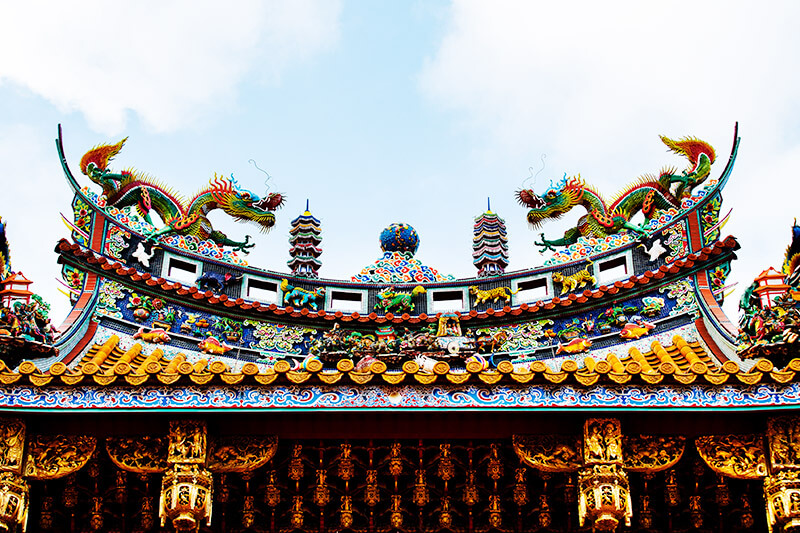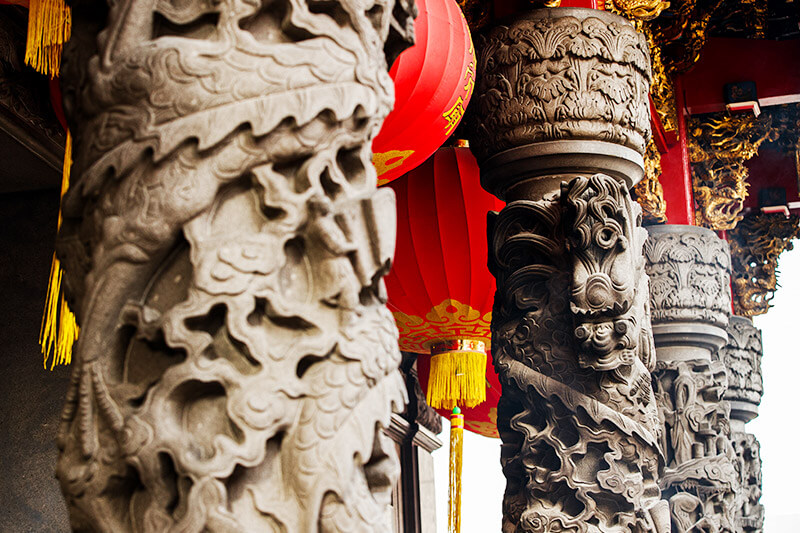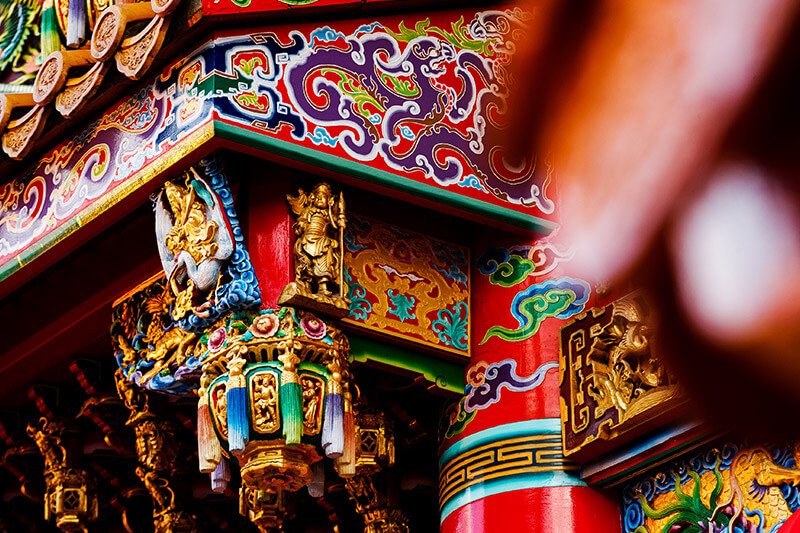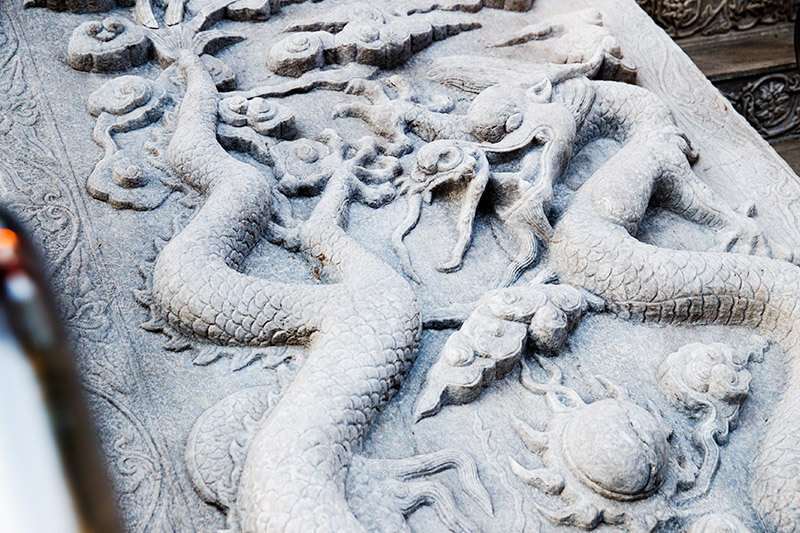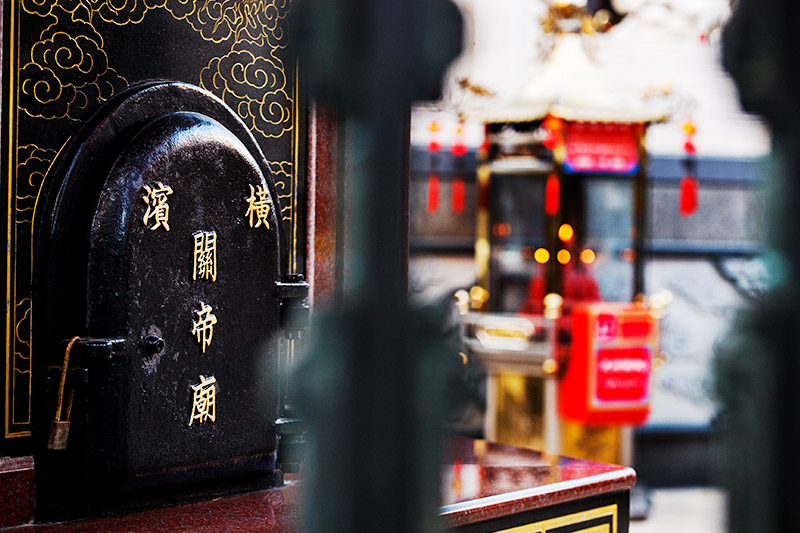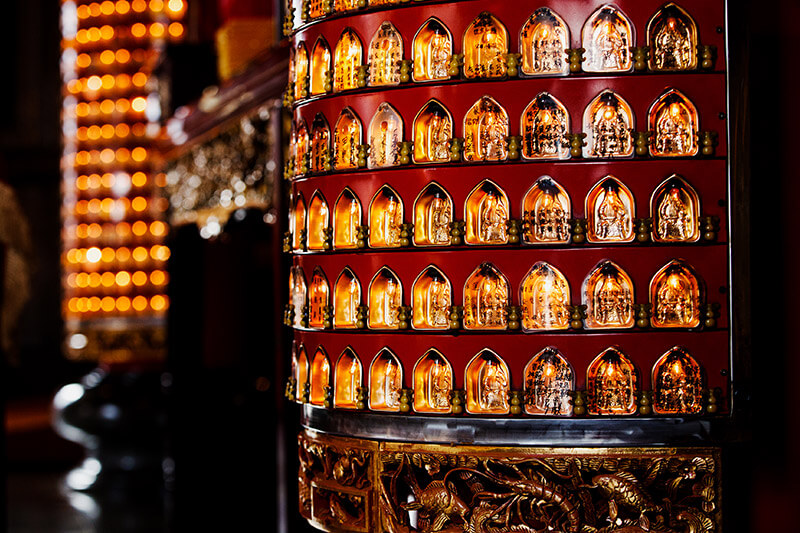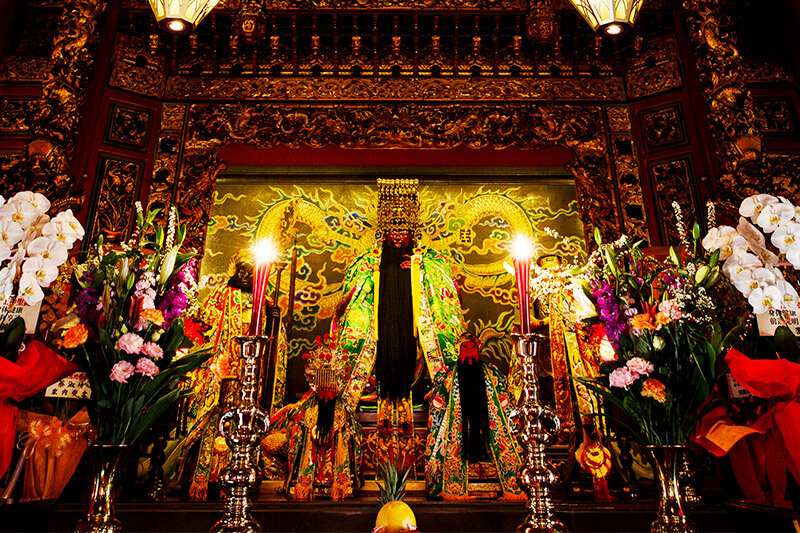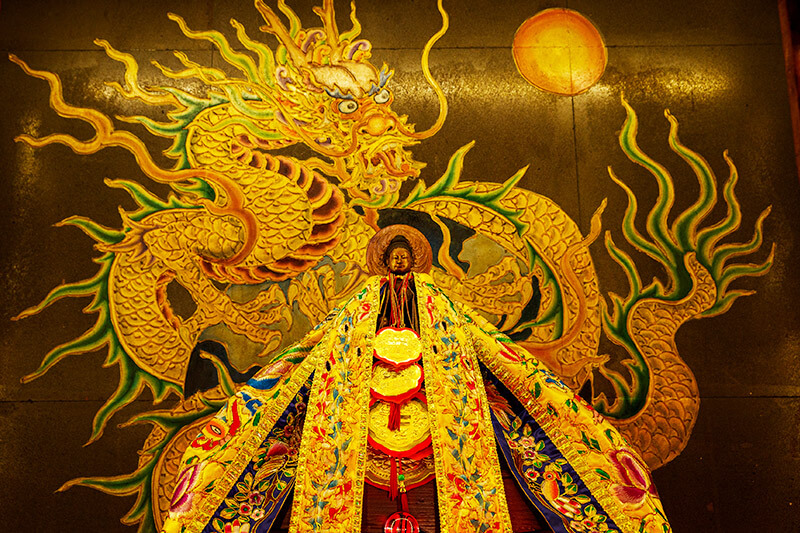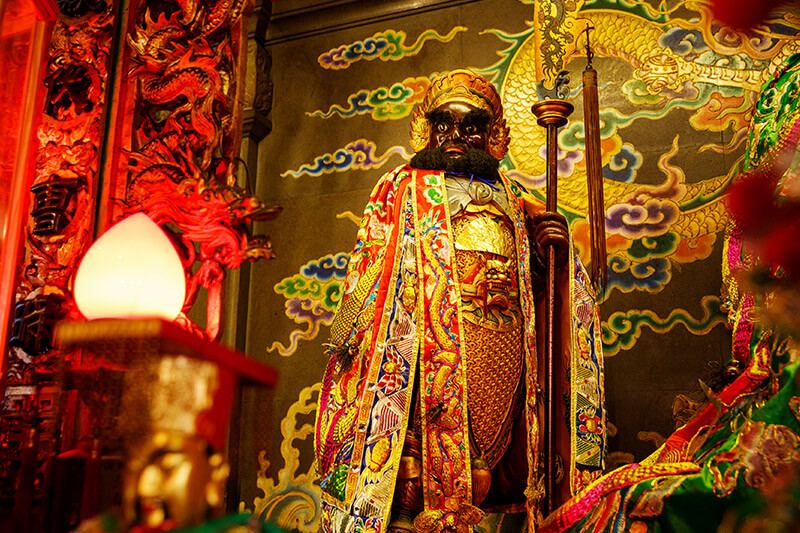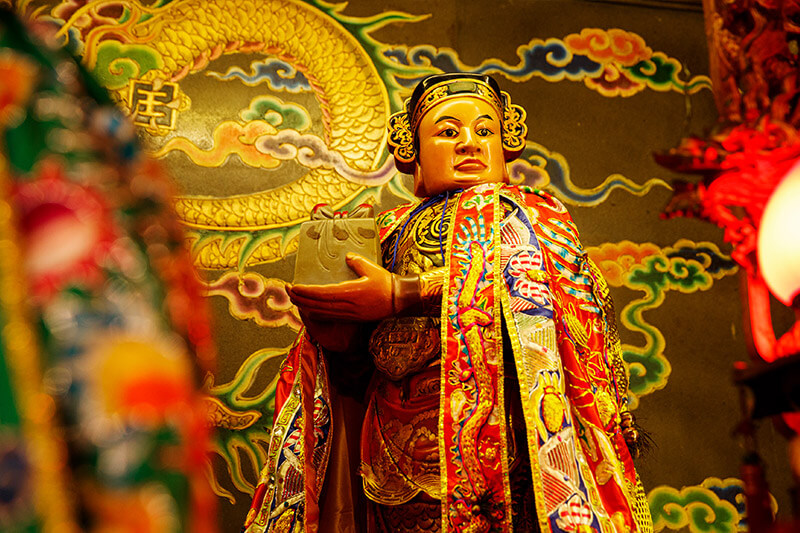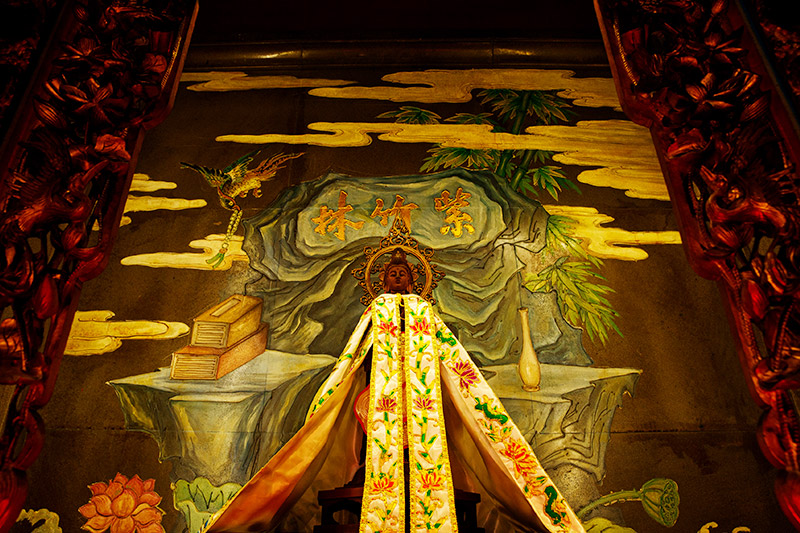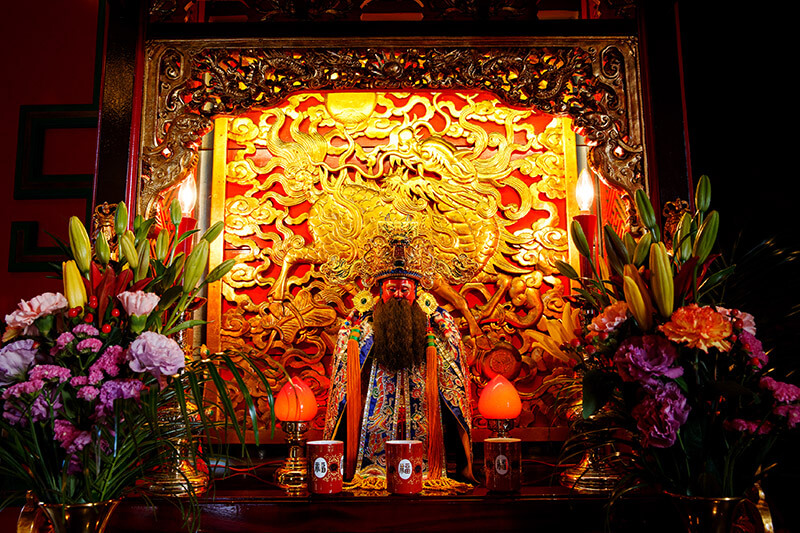Kuan Ti Miao
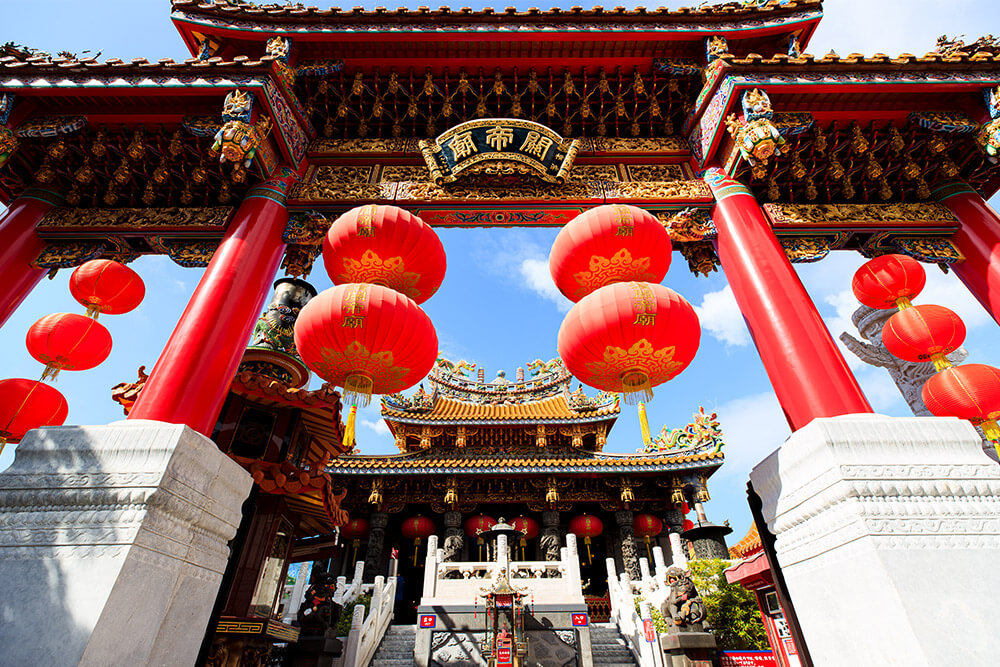
The current structure of Kuan Ti Miao in Yokohama Chinatown was inaugurated on August 14th, 1990 and is the fourth rebuild of the temple. The original temple was built in 1871 but destroyed in the Great Kanto Earthquake of 1923. The second reconstruction was ruined in an air raid during WW2 in 1945, and the third was lost due to a fire of unknown origins in 1986.
Many of its components and craftsman hailing from China. The dragon marble slabs shipped from Beijing that flank the entryway from the main road to the temple were each carved from one continuous piece of marble weighing 4.5 tons. The colorful dragon cornices that adorn the tops of the temple gates and roofs where crafted in Taiwan and carefully shipped to Yokohama as were the four ornate pillars that root in front of the inner temple entrance.
Chinese incense and gold offering paper can be purchased at the information center. Assistance on the worship process and fortune-telling is provided by staff throughout the temple.
Inside the Temple
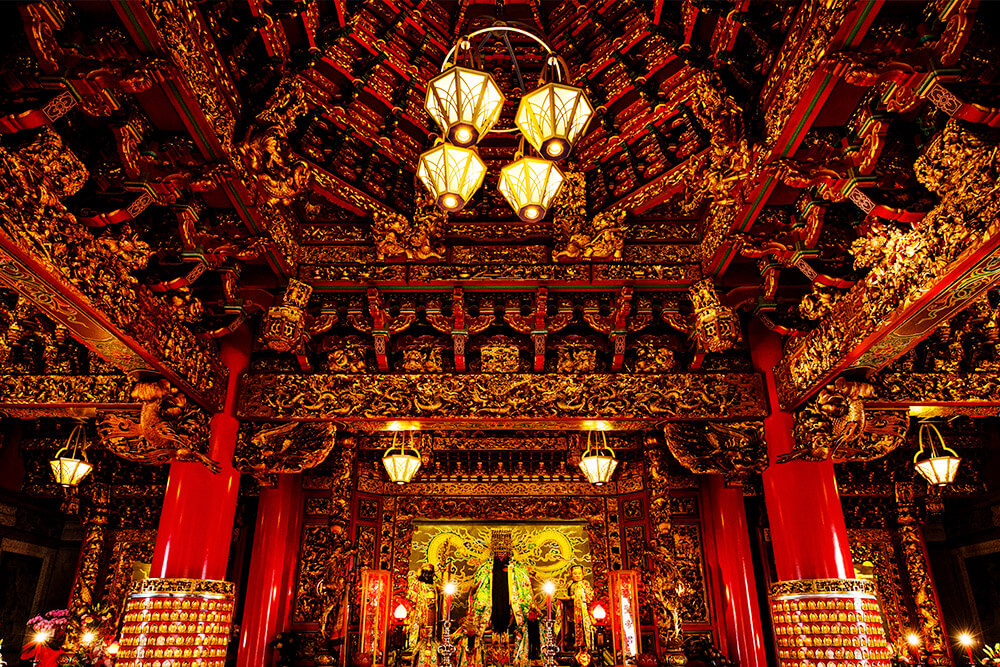
Jade Emperor
In Chinese mythology, the Jade Emperor is the monarch of all deities and is the ruler of Heaven and Earth. As such, he protects universal peace and everything related to human life. The ceiling of Kuan Ti Miao soars skywards to draw the worship to the Heavens where he is said to reside.
Holy Emperor Lord Guan Yu
Often referred by his Taoist title Guan Sheng Di Jun, Holy Emperor Lord Guan, this God of War is often portrayed with a red face. He is the symbol of integrity, strength, and courage during great challenges. In time, he has come to represent benevolence and today he is commonly worshipped as the God of Wealth.
Zhou Cang
Often portrayed with a black face, this fierce warrior is the divine guardian at the Kuan Ti Miao. According to Chinese mythology, he is the weapon bearer and protector of Guan Yu’s Green Dragon Crescent Blade. Zhou Cang killed himself upon learning that Guan Yu and Guan Ping were executed.
